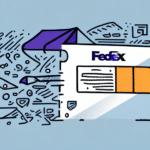How to Insure UPS Packages for Maximum Protection
If you regularly ship packages through UPS, it's crucial to be aware of the risks involved in the shipping process. Despite using the best packaging materials and secure containers, damage or loss can still occur. Therefore, insuring your UPS packages is essential, especially for valuable or fragile items. This guide explores the different types of shipping insurance available, how to choose the right coverage, and strategies to maximize protection to ensure your shipment arrives safely. Additionally, we will discuss common reasons for package damage and loss, the claims process, and tips to avoid common mistakes when insuring UPS packages.
Why Insuring Your UPS Packages is Essential
UPS is one of the world's leading shipping companies, handling millions of packages daily across various destinations. According to industry reports, even with a robust logistics network, packages can sometimes go missing or sustain damage during transit. This risk is heightened when shipping fragile items like glassware, antiques, or electronics. Insuring your shipment provides peace of mind and financial protection by covering the cost of replacing damaged or lost items.
UPS offers different levels of insurance coverage based on the value of your package. For instance, packages valued at $100 or less can utilize the basic coverage, which is included in the shipping cost. However, for packages valued over $100, purchasing additional insurance is advisable to ensure comprehensive coverage in case of loss or damage. UPS Shipping Insurance can save you significant money and hassle in the long run.
Understanding the Different Types of Shipping Insurance
When shipping with UPS, understanding the various shipping insurance options is key to selecting the right protection for your packages. The most common types include:
- Declared Value Coverage: This is the standard level of insurance provided by UPS, covering up to $100 of your shipment's value.
- Full-Value Coverage: This option covers the entire value of your shipment, making it ideal for high-value items.
- Third-Party Insurance: Purchased from external providers, this insurance offers additional protection against damage or loss beyond what UPS provides.
It's important to note that shipping insurance does not cover all types of damage or loss. For example, damages resulting from improper packaging or handling may not be covered. Additionally, certain items, such as perishable goods or hazardous materials, may be excluded from coverage. Always review the terms and conditions of your shipping insurance policy to understand what is and isn't covered.
When selecting a shipping insurance provider, consider factors like cost, coverage level, and the provider's reputation. Some insurers offer additional services such as package tracking or expedited shipping, which can be beneficial for specific shipments. Comparing quotes from multiple providers ensures you receive the best value for your needs.
How to Choose the Right Type of Shipping Insurance for Your Needs
Selecting the appropriate shipping insurance involves several key considerations:
- Shipment Value: Determine the total value of the items you're shipping and choose insurance that adequately covers this amount. For high-value shipments, full-value insurance is recommended.
- Protection Level: Assess whether you need additional protections, such as those offered by third-party insurance providers, especially if shipping fragile or sensitive items.
- Budget: Factor in the cost of insurance and select an option that offers the necessary coverage without exceeding your budget.
- Shipment Type: Consider the nature of your shipment. Fragile or perishable items may require special insurance considerations.
- International Shipping: If shipping internationally, research the insurance requirements and regulations of the destination country to ensure compliance.
By evaluating these factors, you can select the most suitable shipping insurance option to protect your shipments effectively.
Tips for Determining the Value of Your Shipment
Accurately determining the value of your shipment is essential for selecting the right insurance coverage. Follow these steps:
- Calculate Total Value: Sum up the cost of all items being shipped, including taxes and shipping fees.
- Professional Appraisal: For high-value or unique items, consider obtaining a professional appraisal to ascertain their worth.
- Consider Risk Factors: Evaluate the potential for loss or damage during transit, especially for fragile or high-value items, and consider insuring for more than their actual cost if necessary.
- Include Additional Costs: If shipping internationally, account for customs fees or duties that may apply, as these can impact the overall value of your shipment.
Proper valuation ensures that you have adequate insurance coverage, preventing unexpected costs or losses in the event of damage or loss during shipping.
How to Calculate the Cost of Shipping Insurance
The cost of shipping insurance is typically based on the shipment's value and the level of coverage you select. Here's how to calculate it:
- Declared Value Coverage: Often included in your shipping fees for packages valued at $100 or less.
- Full-Value Coverage: Additional fees apply, calculated based on the total value of your package.
- Third-Party Insurance: Costs vary depending on the provider and coverage level.
To estimate the cost, use the UPS shipping calculator. Keep in mind that rates may vary between carriers, so it's advisable to compare insurance costs and coverage options from multiple providers to find the best deal.
Maximizing Protection with Additional Packaging Materials
While insurance provides financial protection, proper packaging is crucial to ensure your shipment's safety. Follow these tips to enhance package protection:
- Use High-Quality Materials: Utilize bubble wrap, packing peanuts, and sturdy boxes to cushion and protect fragile items.
- Double-Boxing: For added protection, place your item in one box, then place that box inside a second, larger box with additional padding materials.
- Reinforced Boxes: Use boxes with reinforced edges or double-walled construction for heavy or fragile items.
- Proper Sizing: Choose a box that snugly fits your items to minimize movement and reduce the risk of damage during transit.
- Labeling: Clearly label your package with the recipient's and sender's correct address. For valuable items, consider marking the package as "Fragile" to alert handlers.
Proper packaging not only helps protect your items but also ensures compliance with UPS's packaging guidelines, increasing the likelihood of safe and timely delivery.
Common Reasons for Package Damage and Loss During Shipping
Packages can be damaged or lost during shipping due to various reasons, including:
- Mishandling: Rough handling by shipping personnel can lead to dents, breaks, or other damages.
- Poor Packaging: Inadequate packaging can fail to protect items from impacts or environmental factors.
- Theft: Packages, especially valuable ones, can be targets for theft during transit or upon delivery.
- Natural Disasters: Events like floods, earthquakes, or hurricanes can disrupt shipping routes and damage packages.
- Transit Delays: Extended transit times can expose packages to unfavorable conditions, such as extreme temperatures or humidity, leading to damage.
To mitigate these risks, use reputable shipping providers like UPS, invest in proper packaging, and consider additional insurance for valuable shipments.
How to File a Claim and Get Compensation for Damaged or Lost Packages
If your package is damaged or lost during shipping, you can file a claim with UPS to seek compensation. Follow these steps to streamline the claims process:
- Gather essential documents, including your tracking number, shipping receipt, and any relevant documentation that shows the value and condition of the shipment before shipping.
- Document the damage by taking clear photos of the affected items and packaging.
- Visit the UPS claims page and submit your claim online or contact UPS customer service.
- Provide all required information and documentation to support your claim.
- Respond promptly to any UPS requests for additional information to expedite the claim process.
UPS will investigate your claim and determine compensation based on the level of insurance coverage. Note that certain items, such as antiques, artwork, and jewelry, may not be fully covered under standard insurance policies. For these items, consider purchasing additional insurance or using specialized shipping services.
Avoiding Common Mistakes When Insuring UPS Packages
When insuring your UPS packages, avoid the following common mistakes to ensure adequate protection:
- Underestimating Shipment Value: Accurately assess the total value of your items to select appropriate insurance coverage.
- Choosing Inadequate Coverage: Ensure the insurance option you select provides sufficient protection for the shipment's value and nature.
- Poor Packaging: Even with insurance, improperly packaged items are more susceptible to damage and may not be fully covered under insurance policies.
- Ignoring Terms and Conditions: Carefully read your insurance policy to understand coverage limitations and exclusions.
- Failing to Label Properly: Incorrect or unclear labeling can lead to delivery issues, increasing the risk of loss or damage.
By avoiding these mistakes, you can enhance the effectiveness of your shipping insurance and reduce the likelihood of issues during the claims process.
Tips for Tracking Your Shipment and Ensuring Its Safe Delivery
Effective tracking and monitoring can help ensure your shipment's safety and timely delivery. Here are some tips:
- Use UPS Tracking: Take advantage of UPS's tracking service to monitor your package's journey in real-time. Visit the UPS Tracking page to enter your tracking number.
- Verify Shipping Information: Double-check the recipient's address and contact information to prevent misdelivery.
- Require Signature Confirmation: For high-value or sensitive items, opt for a signature requirement upon delivery to ensure the package is received by the intended recipient.
- Set Up Notifications: Subscribe to UPS's notification service to receive updates on your package's status via email or SMS.
- Communicate with the Recipient: Inform the recipient about the shipment, providing them with the tracking number and expected delivery date.
These practices help maintain visibility over your shipment and allow you to address any issues proactively.
How to Save Money on Shipping Insurance without Compromising Protection
While shipping insurance is essential, it doesn't have to break the bank. Here are strategies to save money on shipping insurance without sacrificing protection:
- Bundle Shipments: Consolidate multiple shipments into one to qualify for discounted insurance rates.
- Negotiate with Providers: Contact third-party insurance providers to negotiate better rates, especially for frequent shippers.
- Choose Higher Deductibles: Opting for a higher deductible can lower your insurance premiums, but ensure you're comfortable covering the deductible amount if a claim arises.
- Compare Insurance Options: Shop around and compare insurance rates and coverage levels from different providers to find the best deal.
- Assess Necessity of Insurance: Evaluate the risk and value of each shipment to determine if insurance is necessary, thus avoiding unnecessary expenses on lower-value packages.
By implementing these cost-saving measures, you can maintain adequate protection for your shipments while managing your shipping expenses effectively.
Insuring your UPS packages provides crucial protection and peace of mind, safeguarding your valuable items against unforeseen challenges during shipping. When selecting the right insurance, consider the shipment's value, required coverage level, and insurance costs. Coupled with proper packaging and diligent tracking, these steps ensure your shipments are protected and reach their destinations safely.






















